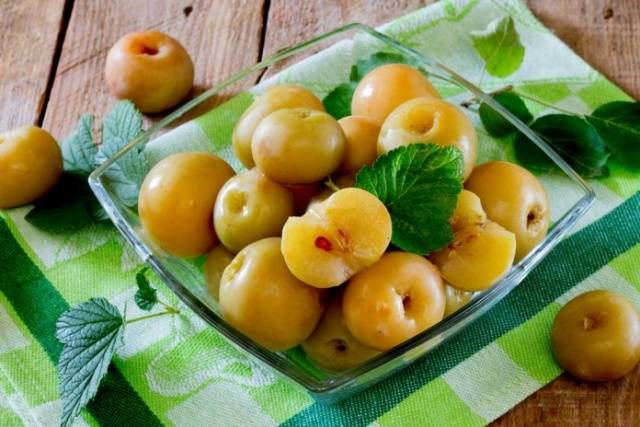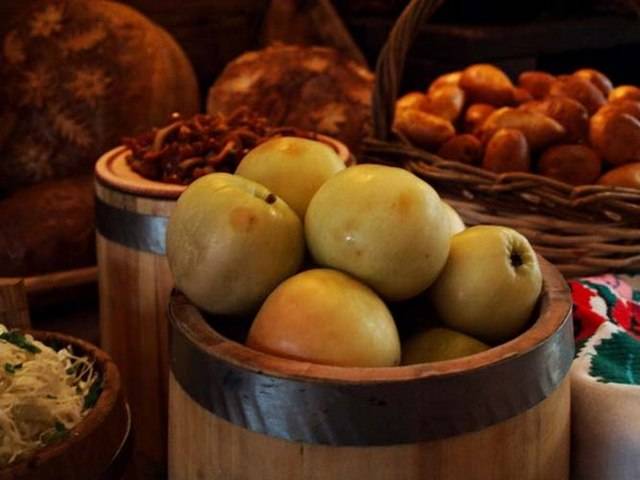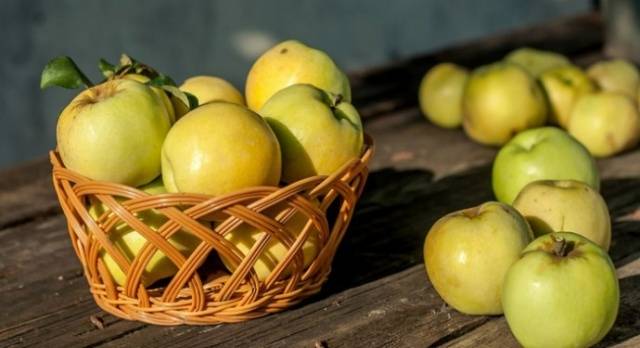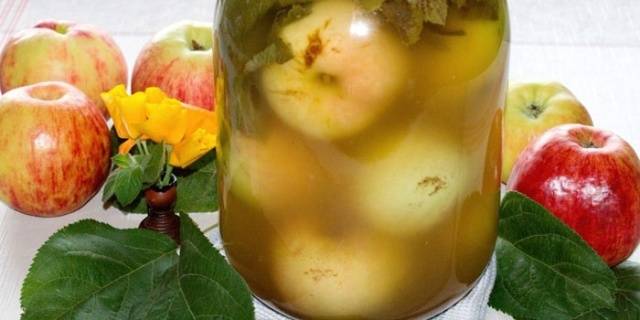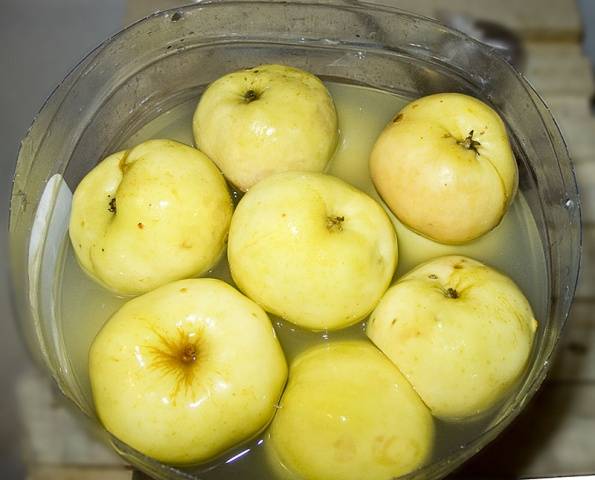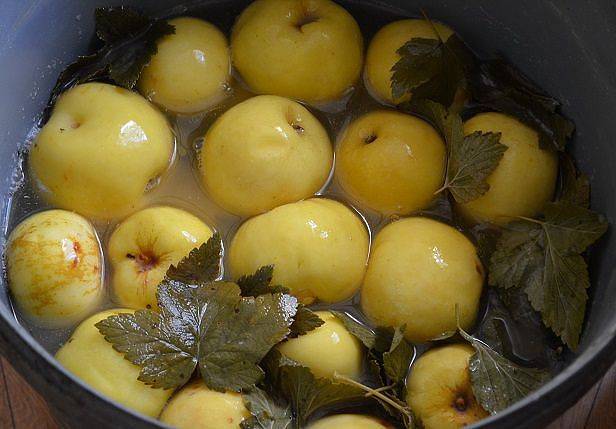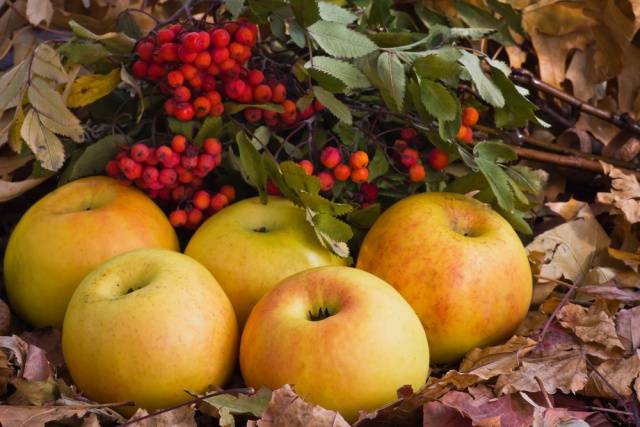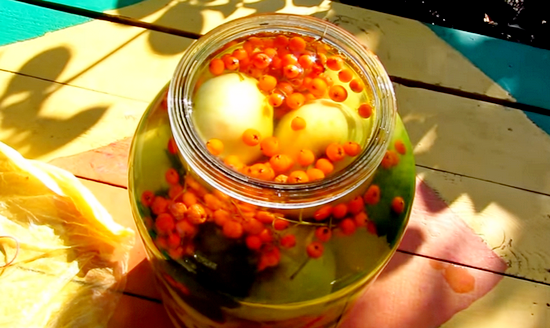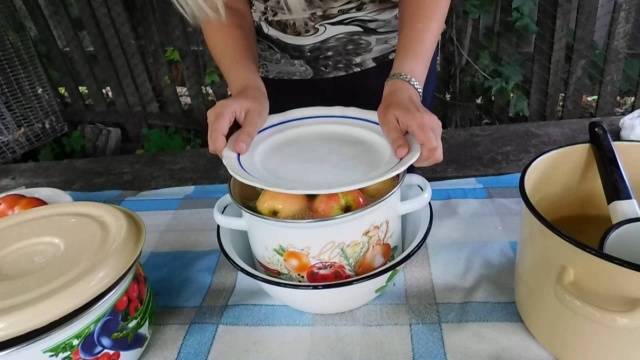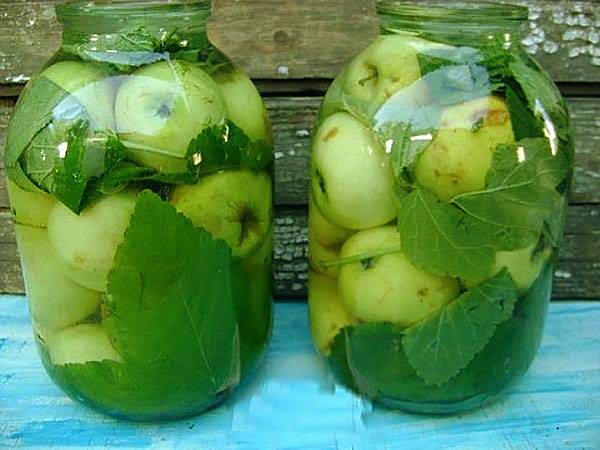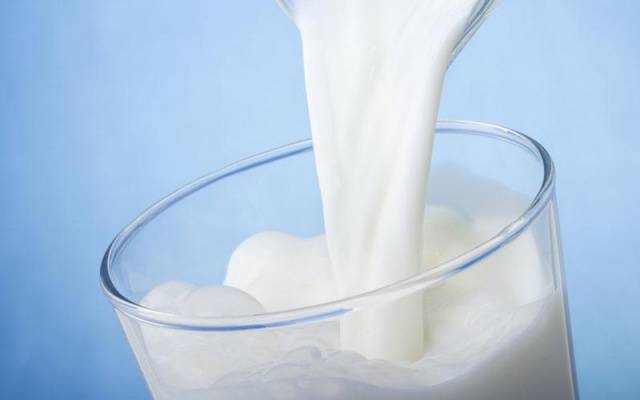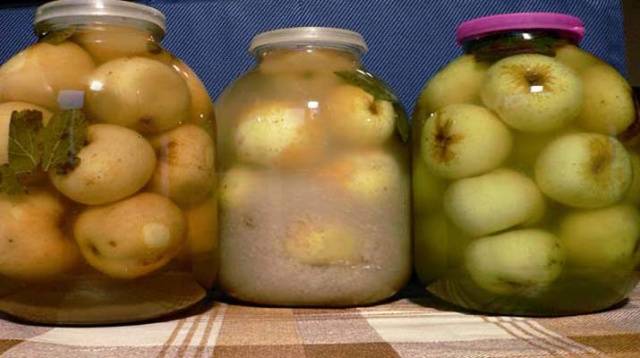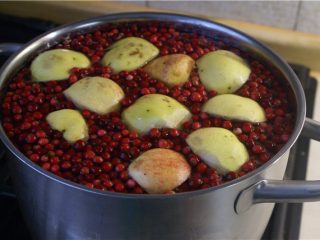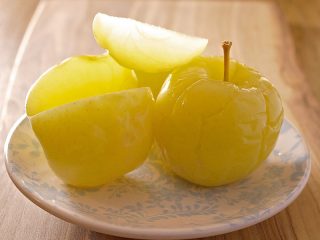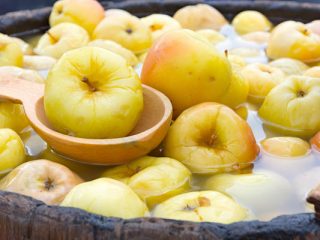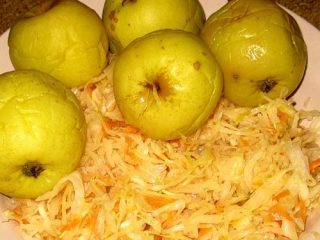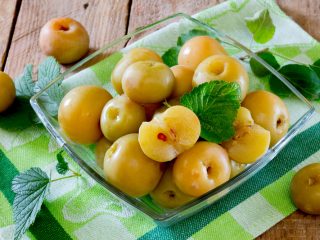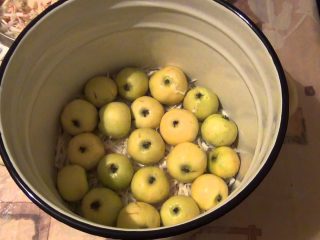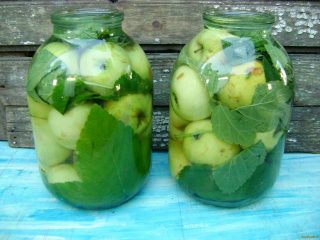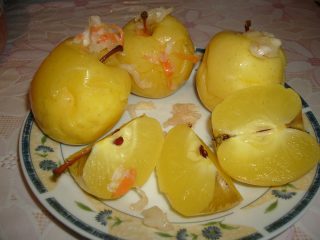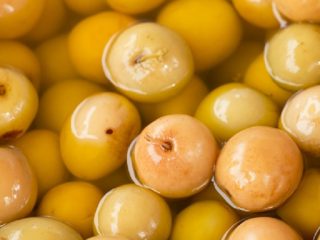Content
Apples tasty and healthy, and late varieties can be stored for up to seven months at a temperature not exceeding 5 degrees. Nutritionists say that every year each of us should eat at least 48 kg of these fruits, and 40% may come from processed products. At the end of winter, spring and until mid-summer, apples are expensive, and jams and preserves, firstly, not everyone can eat without restrictions, and secondly, they spoil the figure.
Soaked apples, which for some reason rarely appear on our table lately, can help out. Of course, not everyone will cook them in wooden barrels. City dwellers do not have space to store large containers, and straw, which is certainly included in old recipes, must be taken somewhere. But who said that you can’t prepare this healthy delicacy a little differently? Today we will offer you several simple recipes for soaked apples for the winter.
Containers and raw materials for soaked apples
Previously, in every basement or cellar there were wooden barrels with soaked apples.But today, for lack of space and the ability to get similar containers cheaply, we can cook them in buckets, enamel pans, three-liter jars, large glass containers with a wide neck. Before use, large containers are washed with hot water and soda and rinsed well, and small containers are sterilized.
The most successful soaked apples for the winter come from late varieties, such as Antonovka, or early ones - white filling and Paping. It is best not to collect fallen fruits, but to pick them from the tree, then bring them to the desired ripeness for 2 or 3 weeks, placing them in boxes.
Apples must be ripe, whole, not damaged by diseases or pests, and of medium size. Since the process of urinating fruits is based on lactic acid fermentation, large fruits cook slowly and unevenly, while small ones quickly peroxidize.
It is best to cook soaked apples in buckets, pans or other containers with a wide neck. Fruits in jars and bottles will rise during fermentation, which will negatively affect the appearance and taste, and placing a load on them will be problematic. But there are recipes that require a container with a narrowed neck. In this case, the jars are filled with apples, filled with brine to the very top and sealed with nylon lids.
Simple recipes for soaked apples
In fact, making soaked apples according to any of the existing recipes, we cannot call any of them difficult. Difficulties arise, for example, if you need to get wheat straw, buy or prepare malt yourself. Also, a recipe for soaked apples may turn out to be unacceptable due to the high cost of some component. Of course, it’s good to use honey for winter preparations, but does everyone even eat enough of it to put it in brine?
We offer you not only easy-to-follow recipes for soaking apples for the winter, but also ones consisting of inexpensive ingredients that can easily be bought at any supermarket or at the nearest market.
The simplest recipe
It’s easier than making pickled apples this way, perhaps, just picking the fruit from the tree and eating it on the spot.
List of ingredients
Take the following products:
- apples – 10 kg;
- salt – 1 tbsp. spoon;
- sugar – 200 g;
- water - approximately 5 liters.
Antonovka is best suited, but other late varieties can be wetted, but the size of the fruits should not be large. If you have cherry or blackcurrant leaves on hand - great, use them, no - and it will be delicious.
Cooking Guide
Wash the apples and place them tightly in a bucket or other glass, enamel or stainless steel container.
Dissolve the required amount of salt and sugar in water, pour over the fruits, cover the container with a plate or an inverted clean lid, and place a weight on top.
Leave for 10-15 days at a temperature normal for a living room, then take it out into the cold. If fermentation occurs at less than 20 degrees or you have chosen a variety that is too sour, the soaked apples will be ready for eating later.
With rowan
If rowan grows near your house, you can pick as much of it as you like and prepare beautiful soaked apples for the winter, additionally enriched with vitamins and with an original flavor.
List of ingredients
To prepare this recipe you will need:
- apples – 10 kg;
- rowan - 1.5 kg;
- sugar – 250 g;
- salt – 80 g;
- water - approximately 5 liters.
If necessary, calculate the exact amount of water as indicated in the previous recipe, only additionally subtract the volume occupied by the berries.
Cooking Guide
Pick off the rowan berries and wash thoroughly.
Boil water, completely dissolving salt and sugar in it, and cool.
Place the washed apples and rowan berries tightly in layers in a clean container.
Pour the brine over the fruit so that the liquid covers them completely, and place a weight on top.
Fermentation should take place at a temperature of 15-16 degrees for 2 weeks, after which put the container in the cold for storage.
With mustard
If you are wondering how to make savory pickled fruits for the winter, try the mustard recipe.
List of ingredients
Prepare the following products:
- apples – 10 kg;
- black currant leaves – 50 pcs.;
- mustard – 3 tbsp. spoons;
- sugar – 200 g;
- salt – 100 g;
- water - approximately 5 liters.
Cooking Guide
Boil water, dissolve mustard, salt, sugar and cool the solution completely.
Line the bottom of the container with blackcurrant leaves, place the fruits tightly, and fill with cold brine. Cover the contents of the saucepan or bucket with clean gauze. Set the pressure.
Soak for 7-10 days at normal living room temperature, then put in the cold.
With kefir
Pickled apples prepared in this way will have an unusual taste.
List of ingredients
You will need:
- apples – 10 kg;
- kefir – 0.5 cups;
- mustard – 1 tbsp. spoon;
- water - approximately 5 liters.
As you can see, there is no salt and sugar in this recipe.
Cooking Guide
Wash the apples and place them tightly in a clean bowl.
Mix cold boiled water with kefir and mustard, pour over the fruit so that they are completely covered with liquid.
Install the oppression by first placing clean gauze on top of the apples. It should be removed daily and washed in soap and water.
Fermentation should take place in a cool place.
Sour soaked apples
According to this recipe, apples can be soaked in three-liter jars.
List of ingredients
For every 5 liters of brine you will need:
- salt – 2 tbsp. spoons without a slide;
- sugar – 2 tbsp. heaped spoons.
Cooking Guide
Sterilize three-liter jars and let them cool completely.
Boil water, dilute salt and sugar, cool.
Wash the apples, place them tightly in glass containers, fill them to the top with brine, and seal them with nylon lids.
Place the jars in deep bowls or small saucepans to catch any liquid that escapes during fermentation.
Wipe the containers daily with a clean damp cloth and add brine. When fermentation is over, remove the jars to the cold.
Conclusion
These are just some of the recipes that allow you to quickly and without unnecessary expenses prepare delicious, healthy pickled apples for the winter. We hope that you will take some of them into account. Bon appetit!
